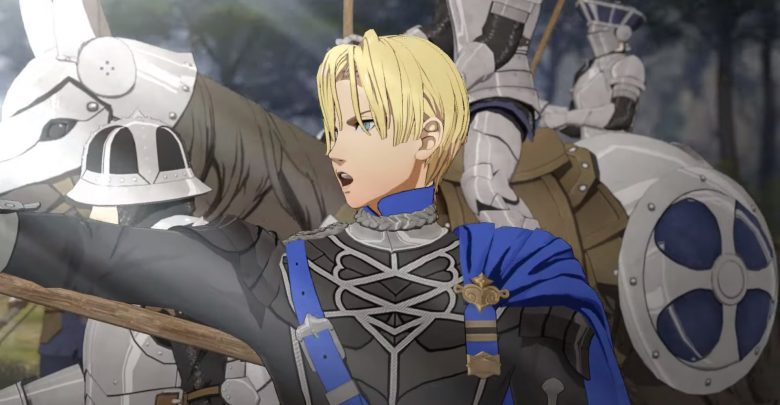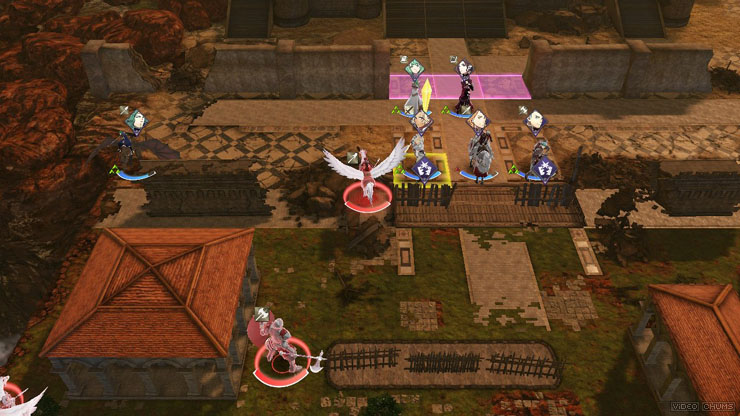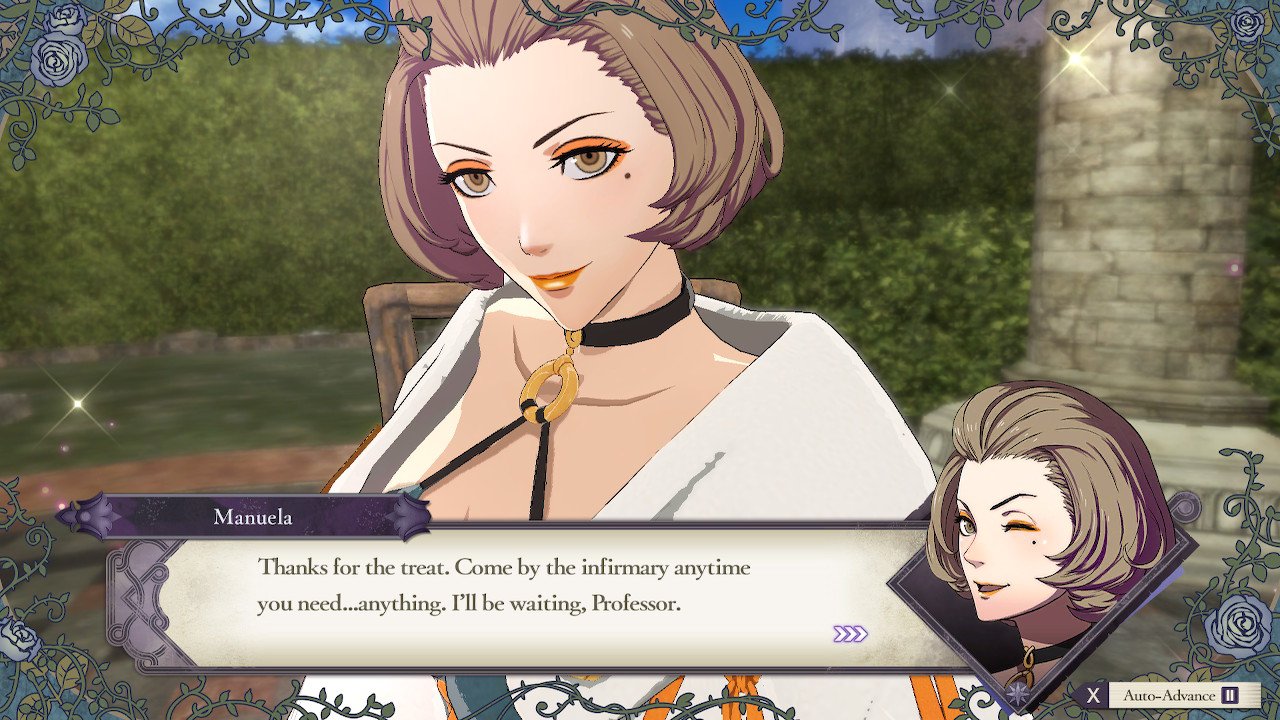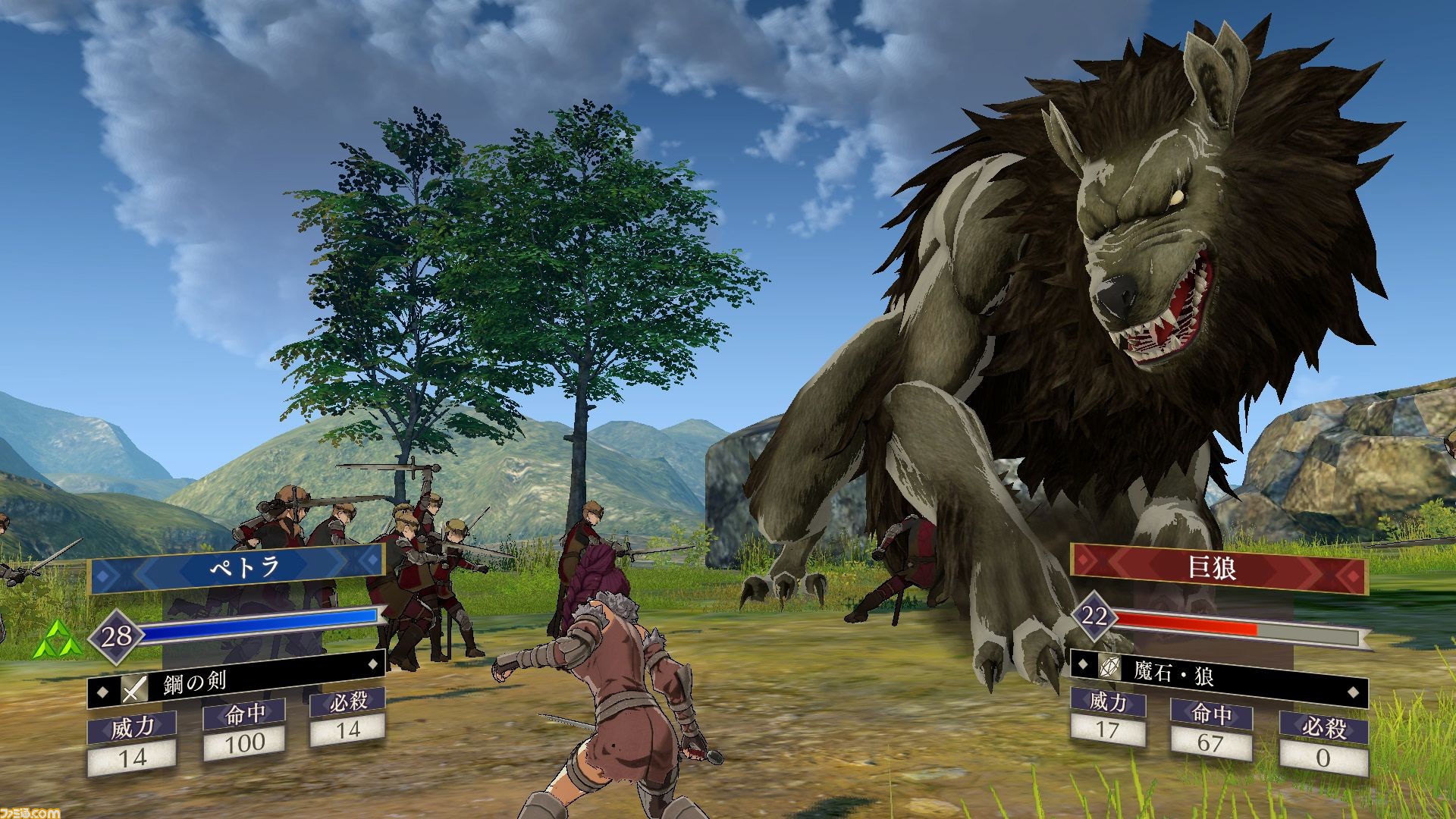
@assassinasan
Do you want a turned-based tactical RPG that also serves as a relationship simulator? If so, Fire Emblem: Three Houses is for you. The structure of gameplay feels similar to Persona 5 where you spend a bulk of the month doing optional activities such as explore, rest, lecture, or battle…
–Exploring involved spending time in the Garegg Mach monastery where you can find items (gifts, ingredients, lost items), buy items at merchants, have a meal with other characters, cook a meal to boost stats, go fishing, plant and harvest seeds, train, enter weapon specific tournaments, talk to characters and invite them to tea, train instructors, and bring some friends to enter a choir. These activities may seem monotonous but they’re surprisingly quick and you have a limited amount of activity points, so you can’t spend too much time doing all of them.
–Resting boosts you ally’s motivation so that they can learn more skills during lectures. If an ally’s motivation is low, they won’t be able to learn anything new. Additionally, once you have a special sword, resting replenishes it’s use.

–Lectures are where you pay attention to a characters goals (e.g. reason, faith, sword/axe/Lance bow skills) and level up those stats.
–Battles are what takes place in main missions except the optional ones are much shorter. This is a good opportunity to level up characters stats and their bonds with other characters. You can level up bonds by having characters stand next to each other during an attack. When characters have a higher bond rank, they gain combat boosts when together on the battle field. Battles also come in the form of quests or they have rare monsters appearances that can drop materials for forging and repairing weapons. Battling is where Fire Emblem: Three Houses feels the most like other Fire Emblem games. The biggest difference is characters can equip battalions feeling more like a war instead of a skirmish.

No matter which optional activity you chose, you won’t be punished for focusing on one more than the other. They each have their pro’s and con’s, so it gives players the option to engage in the activities they enjoy. I enjoyed battles, but still engaged in all activities to keep things balanced.
It’s very difficult for a game or any form of media to have a large roster of characters and flesh all of them out. Fire Emblem: Three Houses excels in this. I was amazed at how fleshed-out every character in each house is. Although you only get to know the characters in your house or those you recruit to your house, you still get a superficial understanding of characters from other houses. Every character is revealed to have multiple layers as you deepen that bond (much like real life).

Every student’s personality begins to be understandable through their back story and motivations. For example, Bernadetta may seem like an annoying anti-social person; but as you get to know her, you’ll learn about her traumatic past which informs her isolative behavior. Not only are their individual stories interesting but each of these characters are somehow tied to the bigger political issues and religious doctrine in all of Foldlan. However, these issues aren’t apparent until the latter half of the game. Due to this, I spent a lot of time paying close attention to conversations when exploring the monastery. Not only because the dialogue is engaging, but sometimes picking the right dialogue choice or talking to the character about things they’re interested in during tea time can max out your ally stats.
One thing Fire Emblem: Three Houses minimized is the ability to play cupid with other characters. I don’t know why there was such an appeal to hooking people up and seeing them excel in battle next to one another, but this change did make the relationships feel more organic and less forced. For instance, hooking Hubert up with anyone but Edelgard may seem very strange since his main purpose in life is to follow her.

Another change is there is no building an S rank to marry your character of choice, so you both can have a child and that child will fight along your side through some fantastic time warp (think how future Trunks joins the battle in Dragon Ball Z). While this made for a fun outcome to building relationships, it also felt far less realistic. Fire Emblem: Three Houses also expanded options of LGBTQ relationships but those options are still limited, especially when romancing other males as the male protagonist, in which you’ll only have one option.
Hardcore Fire Emblem players pride themselves in playing on classic difficulty, which has permadeath for ally’s who fall in battle. The aim is always to end with all allies alive, which motivates one to pay close attention to moves during battle. This is more feasible in Fire Emblem: Three Houses because of the new Divine Pulse ability, which rewinds time back to a point in the battle where you wanted to do things differently. This can be used up to three times at first and then upgraded.

If one of your allies dies, it’s extremely heartfelt because of how great the characters were developed, but most players will likely just start the battle over. Even if you make it to the end of the game with all of your allies alive, you’ll still be forced to see some of those characters you grew bonds with slain. Fire Emblem: Three Houses starts as light-hearted as Harry Potter and ends with the drama of Game of Thrones (minus the incest). Even if you’re a casual Fire Emblem player or you simply want to speed through other houses, the game allows you to auto-advance almost anything. The game will randomly generate which skills to focus on during lectures and what moves to make during battle. Just make sure you enable Casual difficulty to avoid too much loss.
I ended my Black Eagle house playthrough thinking this was the canon house due to some twists and turns that I couldn’t imagine having control over if I wasn’t a Black Eagle professor. Yet, I noticed some changes in other house leaders that I didn’t fully understand because they weren’t in my house. I wound up satisfied with my choice of picking the Black Eagle House, yet intrigued at every other houses’ individual and collective stories. I seldom have a game that makes me want to play all over again just to understand a different angle, unless they’re narrative games like those form Quantic Dreams or Telltale. Even though Fire Emblem was a solid 40-50 hour experience, I’m extremely motivated to play through for another 100 hours to experience the Blue Lions and Golden Deer, get to know all the leaders, pick a different gender, romance a different human, and learn everyone’s story. 4.25-4.5/5 Bibles.
-Dee Assassina

